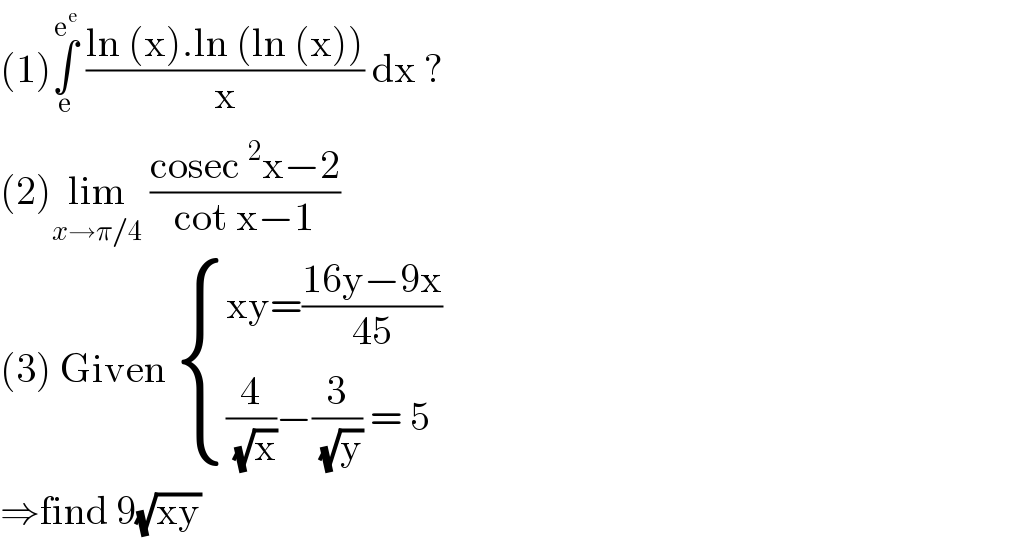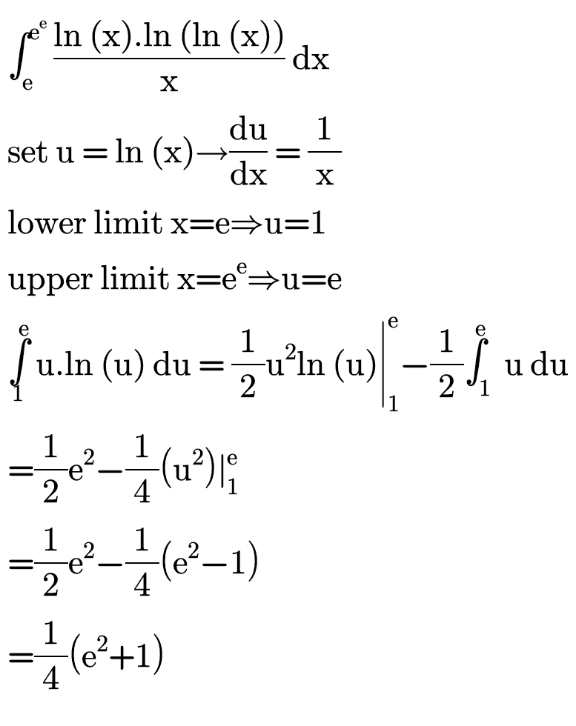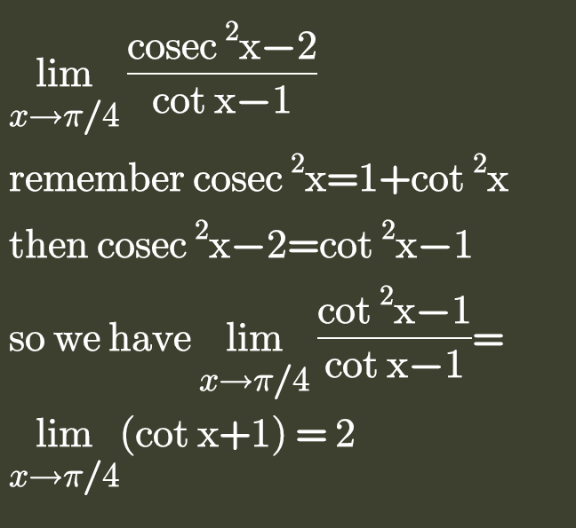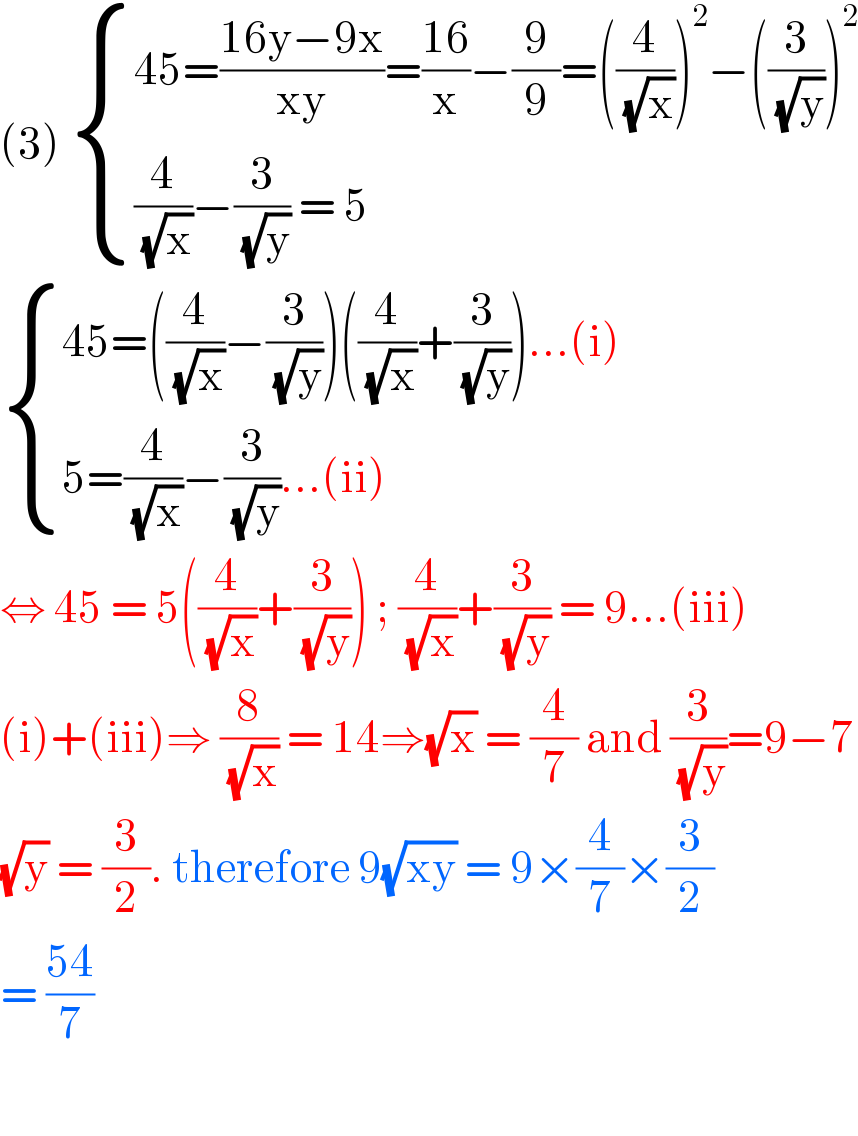
Question and Answers Forum
Question Number 110875 by bemath last updated on 31/Aug/20

Answered by Dwaipayan Shikari last updated on 31/Aug/20
![∫_e ^e^e ((log(x)log(log(x)))/x)dx (logx=t,(1/x)=(dt/dx)) ∫_1 ^e tlog(t)dt [logt.(t^2 /2)]_1 ^e −∫_1 ^e (t/2)=(e^2 /2)−(e^2 /4)+(1/4)=(1/4)(e^2 +1)](Q110882.png)
Commented by bemath last updated on 31/Aug/20

Commented by bemath last updated on 31/Aug/20

Answered by Dwaipayan Shikari last updated on 31/Aug/20

Commented by bemath last updated on 31/Aug/20

Answered by bobhans last updated on 31/Aug/20

Commented by bemath last updated on 31/Aug/20

Answered by mathmax by abdo last updated on 31/Aug/20
![I =∫_e ^e^e ((ln(x)ln(lnx))/x) dx changement lnx =t give I =∫_1 ^e ((t ln(t))/e^t ) e^t dt =∫_1 ^e tln(t)dt =[(t^2 /2)ln(t)]_1 ^e −∫_1 ^e (t^2 /2)(dt/t) =(e^2 /2) −(1/2)∫_1 ^e t dt =(e^2 /2)−(1/2)[(t^2 /2)]_1 ^e =(e^2 /2)−(1/4){e^2 −1} =(e^2 /4) +(1/4) ⇒ I =((1+e^2 )/4)](Q110938.png)
